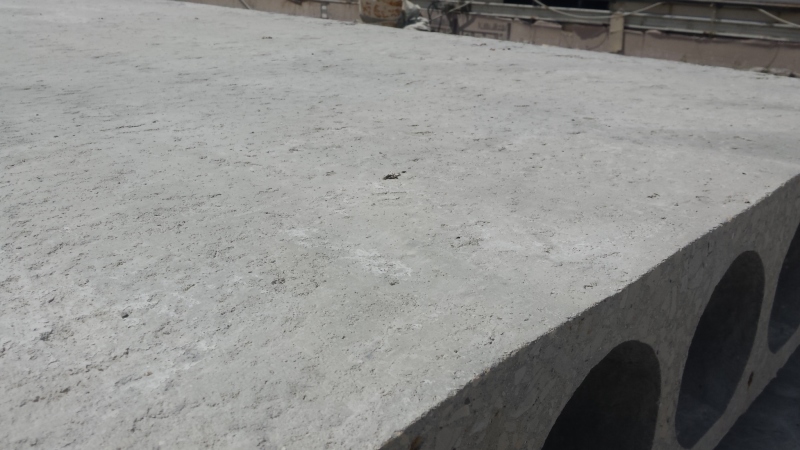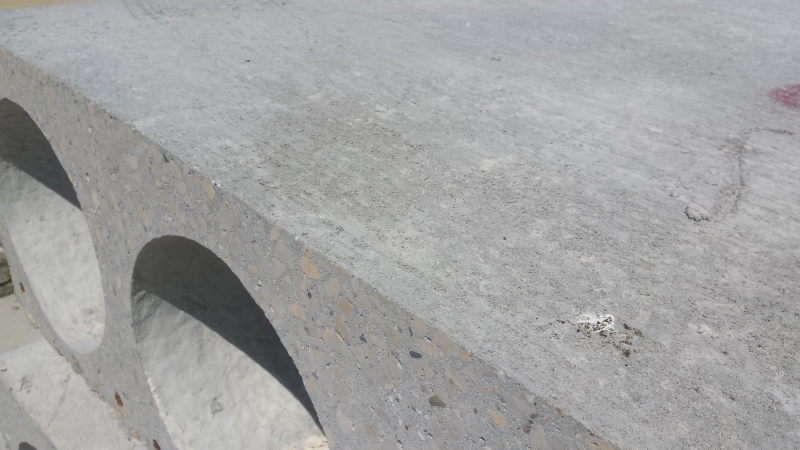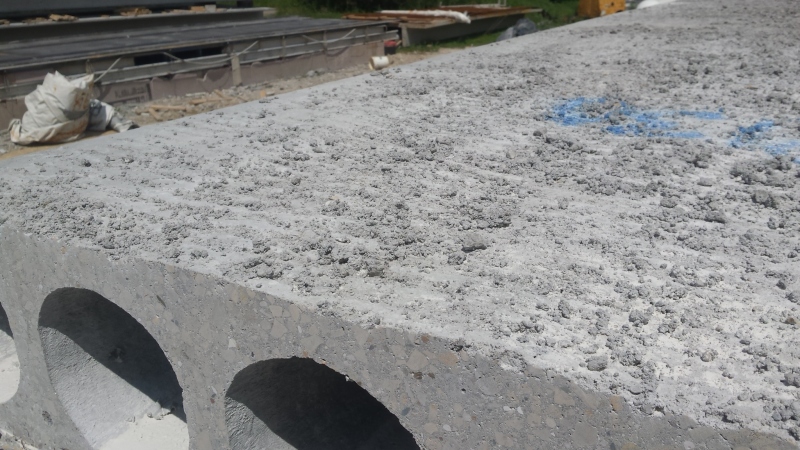I'm helping a precaster out with the design of some hollowcore plank and some confusion has arisen regarding the required surface treatment required for the top of the planks. They could be left as cast, they could be intentionally roughened, or they they could be polished super smooth. As cast is obviously the cheapest and, as far as I can tell, there's no need for anything exceptional regarding finish.
There are two kinds of plank here:
1) Floor planks that get a 1.5" gypcrete topping only. No special treatment was specified in the contract documents.
2) Roof planks that receive no topping but only a roof membrane. Here the contract documents call for a smooth troweled finish.
So my questions are:
1) Could anyone point me to any photos of the various surface conditions? This would help the design team.
2) How would one describe the as cast finish on hollowcore planks? Would it qualify as smooth troweled?
3) Is there any justification for a roughened surface when using gypcrete topping? It's not composite, of course, but it should stay put.
4) At membrane conditions, is some degree of smoothness required in order to not damage the membrane?
When queried, the response that I got from the design team was "not smooth". I think that means as cast but I find it a bit ambiguous. All parties here --
including me -- are operating at a relatively modest degree of sophistication on this so just asking questions isn't getting me where I need to be.
I like to debate structural engineering theory -- a lot. If I challenge you on something, know that I'm doing so because I respect your opinion enough to either change it or adopt it.
There are two kinds of plank here:
1) Floor planks that get a 1.5" gypcrete topping only. No special treatment was specified in the contract documents.
2) Roof planks that receive no topping but only a roof membrane. Here the contract documents call for a smooth troweled finish.
So my questions are:
1) Could anyone point me to any photos of the various surface conditions? This would help the design team.
2) How would one describe the as cast finish on hollowcore planks? Would it qualify as smooth troweled?
3) Is there any justification for a roughened surface when using gypcrete topping? It's not composite, of course, but it should stay put.
4) At membrane conditions, is some degree of smoothness required in order to not damage the membrane?
When queried, the response that I got from the design team was "not smooth". I think that means as cast but I find it a bit ambiguous. All parties here --
including me -- are operating at a relatively modest degree of sophistication on this so just asking questions isn't getting me where I need to be.
I like to debate structural engineering theory -- a lot. If I challenge you on something, know that I'm doing so because I respect your opinion enough to either change it or adopt it.



